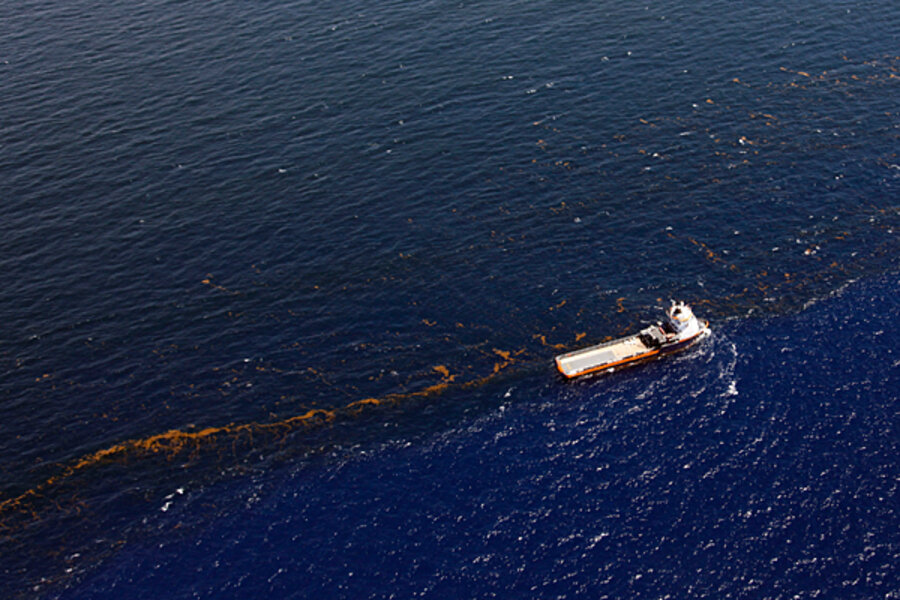From 'static kill' to 'bottom kill’: next steps in Gulf oil spill
Loading...
| New Orleans
With the operation to permanently seal the runaway well at the center of the Gulf oil spill set to begin as early as the week after next, relief efforts are already casting an eye to the longer-term future to determine "how clean is clean" and when they will begin to draw down resources.
A coordinated effort to clean up residual oil left standing in marshes and beaches will continue through September, said retired Coast Guard Adm. Thad Allen, who is overseeing the federal effort, in a press briefing Monday.
This week BP and Coast Guard officials are preparing what they call a “bottom kill” – the permanent sealing of the runaway Macondo well through one of the two relief wells drilled 13,000 feet below the seafloor. According to Allen, BP will deposit through the relief well a combination of drilling mud, cement, liquids, and nitrogen to stop the flow of oil – perhaps as early as Aug. 7.
That operation will come after “static kill,” which has a tentative start date of next Monday. Static kill would deposit the same mixture of materials into the top of the well. Unlike “top kill” in late May, which employed the same tactic, static kill is considered a more realistic solution to preventing oil flow because the container cap, installed in mid-July, is providing a tighter seal around the wellhead and therefore won't allow oil and gas to escape.
Both operations are being prepared simultaneously. Monday the well lines are being reattached to the riser pipes that extend from the seafloor to near the surface, after they were temporarily abandoned this weekend due to the threat of tropical storm Bonnie. Both lines will be flushed to remove sediments.
Starting Wednesday and continuing through Sunday, the lines will each be fitted with a 2,000-foot internal casing pipe that will carry the materials downward. Once they are in place, the static kill operation will occur, likely Monday. The entire endeavor is set to prepare the launch of the relief well operation.
“The week after next we will have the potential … to begin killing the well,” he said.
Despite the tight time schedule, Allen said the Coast Guard is starting to transition resources to address cleanup efforts long past the moment the well is permanently shut down.
Aerial surveillance from this past weekend shows there are at least “hundreds of thousands of [oil] patches” on the surface of Gulf waters and, because the oil can biodegrade into small fragments, locating their residual forms is expected to take between four to six weeks after the well is sealed, Allen said.
“We’re going to have [oil] tarballs and other impacts going on for a long, long time and we have to prepare,” he said.
Allen said he is starting to meet with local government officials to establish guidelines for “how clean is clean” regarding oil findings in their communities. Because the most elusive oil will end up out of sight, he wants to create a protocol for addressing oil should it be discovered in coming months.
He envisioned a scenario where oil might be discovered underneath a beach. In that case, the oil would be tested to determine if it originated from the Macondo well. If it did, BP would be alerted to clean the area.
“When I say there’s hundreds of thousands of patches, it is literally that, but they’re not as large as they used to be, so they’re harder to locate,” Allen said. “There’s definitely oil out there and we need to be able to deal with it.”
Related:





